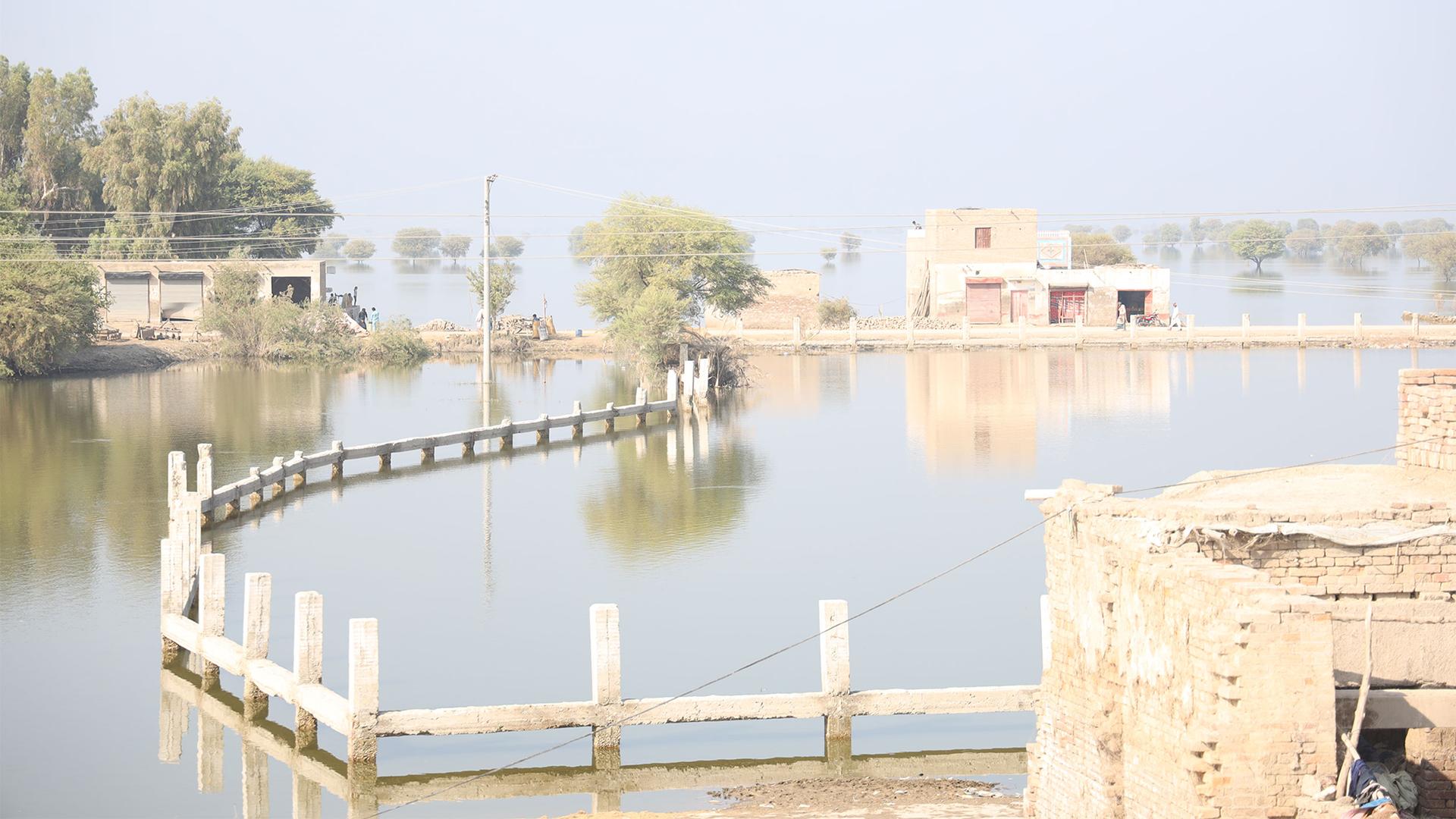A Pakistani family sees firsthand the effects of climate change, as negotiators at COP27 battle over how to pay for them
Abdul Ghani and his extended family fled to the roof of a nearby girls’ school in August when the floodwaters came to his town in southern Pakistan’s Sindh province. His family was still there two weeks later, without tents or any other shelter, when waves whipped up in the floodwaters destroyed their house.
“Our hearts sank,” Ghani said from the sun-scorched school roof, where the one remaining room of his home is still visible and surrounded by water. “The house that was our shelter, our children’s home, was destroyed.”
Ghani, a mason, built the nine-room home in a small farming town in the Dadu district himself. He lived there with his wife and three kids, along with his seven brothers and their families.
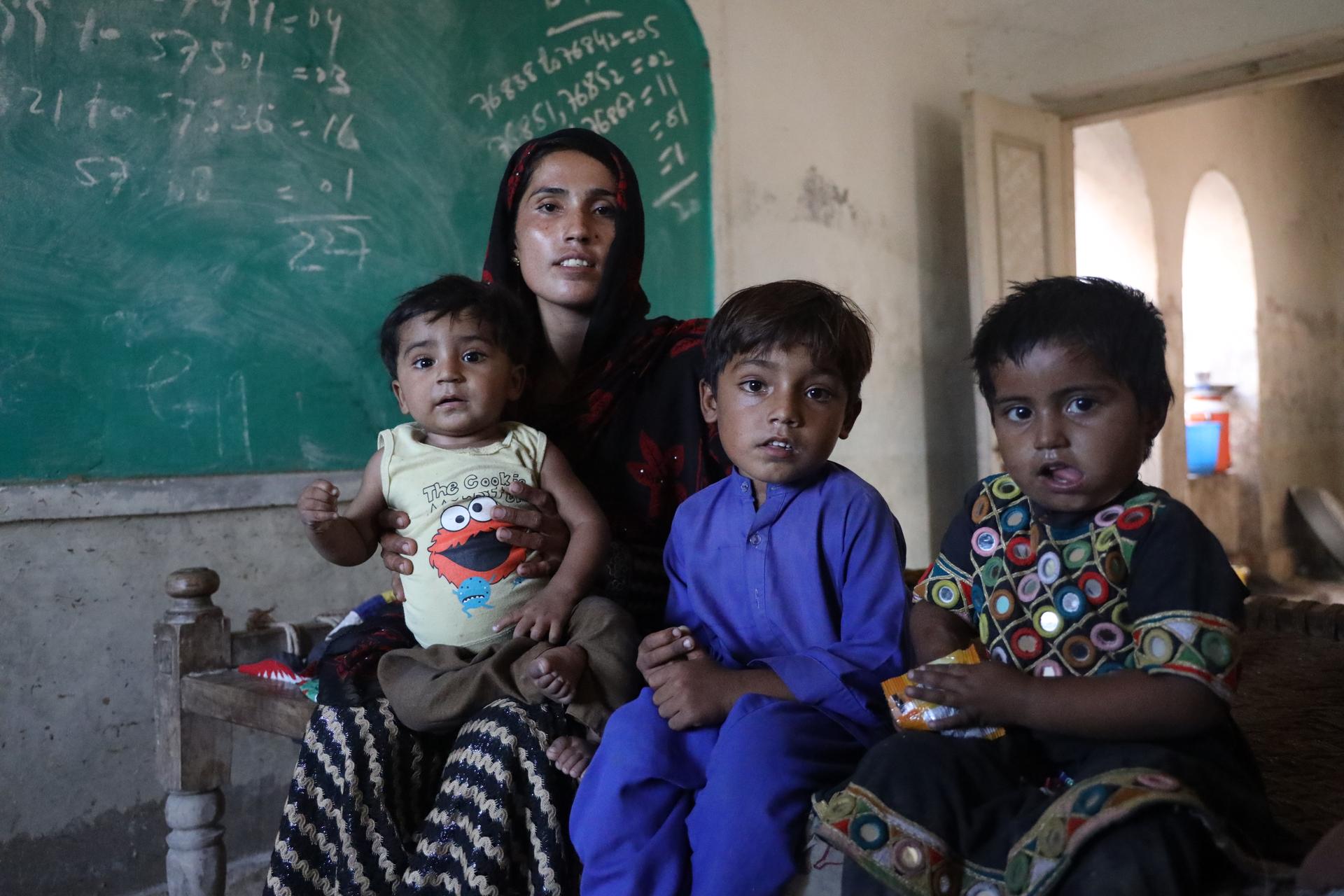
Unprecedented rains in Pakistan that began in mid-June led to flooding that impacted 33 million people and killed more than 1,700 others, causing an estimated $30 million in damages and economic losses.
Some two months after the rains stopped, 7,000 square miles of land in Sindh are still submerged under water.
Five million of the 8 million people displaced by the floods are still unable to return home.
Paying for damages
The question of who should pay for damages like these wrought by climate-fueled disasters has been one of the most contentious issues at the UN climate summit this month in Sharm el-Sheikh, Egypt, with Pakistan’s floods a focal point of discussions.
“We are paying the price for other people’s carbon usage,” said Sherry Rehman, Pakistan’s climate minister, who is at the summit. In recent months, she’s often cited the statistic that Pakistan has contributed far less than 1% of the world’s greenhouse gas emissions, even though it’s among those bearing the brunt of the consequences.
Pakistan is leading a negotiating bloc of 134 developing countries in calling for a dedicated pot of money to be established for “loss and damage” funding.
“Countries on the frontline of the climate crisis are facing accelerated catastrophes, and are not getting the relief and rehabilitation funding they need,” Rehman said.
For decades, developed countries have resisted calls for direct climate aid, partially out of fear of exposing themselves to claims of financial or legal liability, not to mention the complexities of defining which damages should be included.
In the floods in Pakistan, for example, it’s difficult to tease out how much climate change contributed to the estimated $30 million in damages and economic losses.
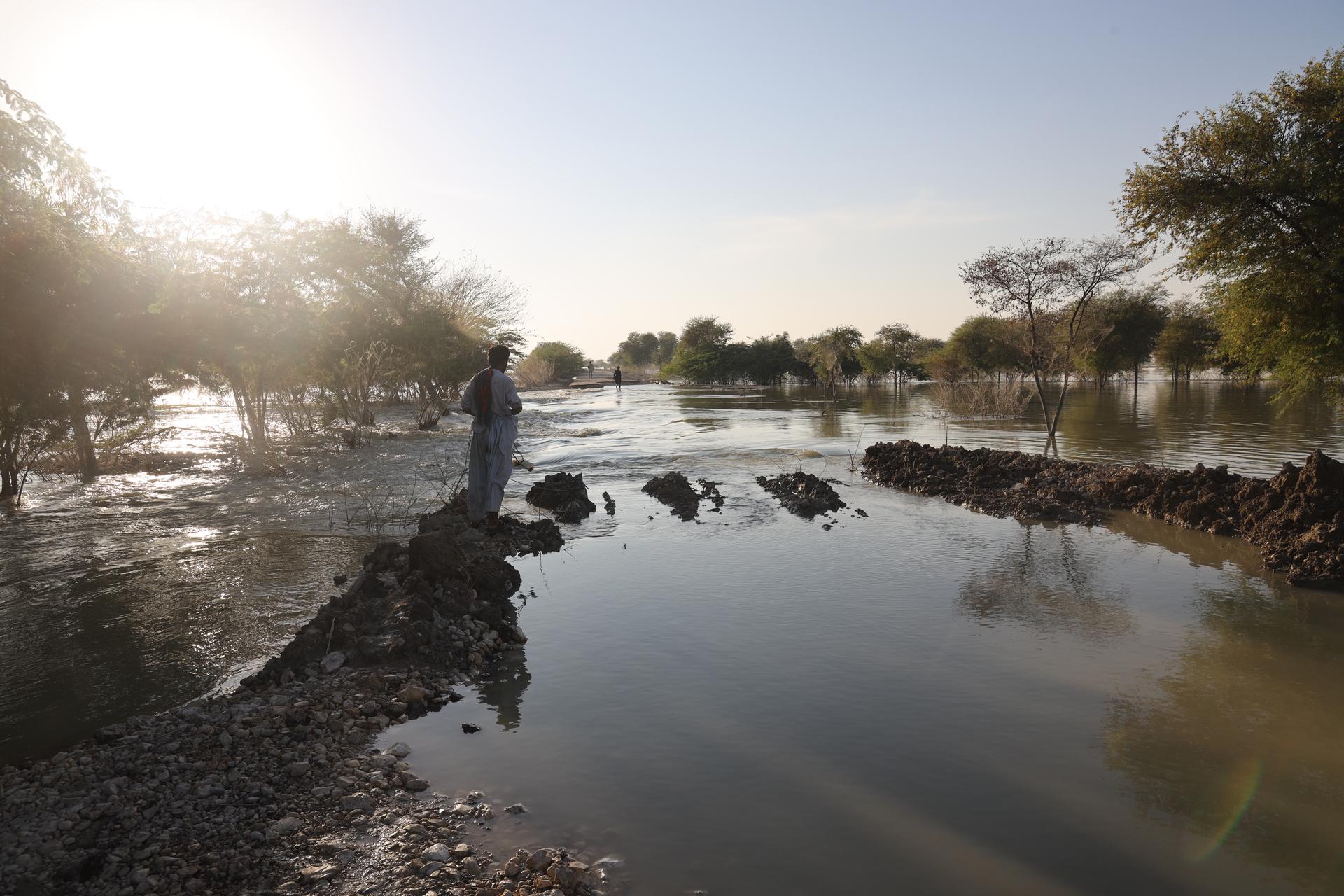
Warming contributed to the torrential rains that triggered these floods. An attribution study published by an international group of scientists in September found that rainfall in Sindh and neighboring Balochistan is 50% more intense now than it would have been without climate change.
But the researchers say that other factors also drove the damages, including development on flood plains, inadequate infrastructure, an outdated river management system, high poverty rates and a lack of adequate early warning systems.
Early momentum at COP27
For the first time, this year, countries have started to volunteer funds specifically for losses and damages. Several European countries, along with New Zealand, announced tens of millions of dollars in aid in the first week of the summit.
Also for the first time, negotiators at the climate summit have a mandate to discuss an official mechanism for loss and damage funding through the UN, “with a view to adopting a conclusive decision no later than 2024.
It’s not yet clear what shape any funding will take.
Developed countries want to discuss options for funding at COP27 and decide on a solution by 2024. Developing countries want to agree to a loss and damage fund this year, and hammer out the operational details until 2024, when it would then go into effect.
US climate envoy John Kerry said “not a lot of people want to sign off on something that is not yet fully defined.”
“The well-known fact is that the United States and many other countries will not establish some sort of legal structure that is tied to compensation or liability,” Kerry added.
The European Union’s head of delegation, Jake Werksman, said last week that the negotiations aim to start a broad conversation, not focus on a single solution like a fund for losses and damages.
The US and EU also favor funding to flow through existing programs and institutions, such as the International Monetary Fund or the Green Climate Fund.
Insurance and disaster protection
The G-7, meanwhile, spearheaded by Germany with a $173 million commitment, launched a “Global Shield” program on Monday, based on insurance and disaster protection for vulnerable countries.
But developing countries insist that a loss and damage fund — not just insurance or loans, which would trap them in further debt — is essential, and must be agreed to this year.
Proponents of such a fund argue that post-disaster aid, which currently seeks to address events like Pakistan’s floods, comes at the whim of donors.
So far, a UN appeal for Pakistan has brought in only a third of its goal, and that itself is only a fraction of the $16 billion the government estimates it will take to rebuild.
“International aid is given for charity. Rich people feel bad that this event is happening in poor countries, and they give money,” saidSaleemul Huq, a Bangladeshi scientist who’s attended every UN climate summit and is a longtime adviser to the Least Developed Countries coalition.
“Loss and damage is not that,” Huq added. “It is polluters taking responsibility for having caused the problem, recognizing that there are victims of the problem who they have the responsibility to help.”
Meanwhile, aid that does follow disasters can be slow to arrive, exacerbating health and economic problems.
Water-born illnesses spiked in Pakistan with the floods. Officials fear widespread increases of malnutrition — which impacted nearly 1 in 2 Pakistani children even before the floods — and upticks in child marriage rates.
Back at the girls’ school where Abdul Ghani now lives with five of his brothers and their families, it’s hard to keep the kids out of the floodwaters.
“We try to stop them, but they won’t listen,” Heer Mallah, Ghani’s wife, said while cooking stewed spinach and potatoes in the hallway of the school.
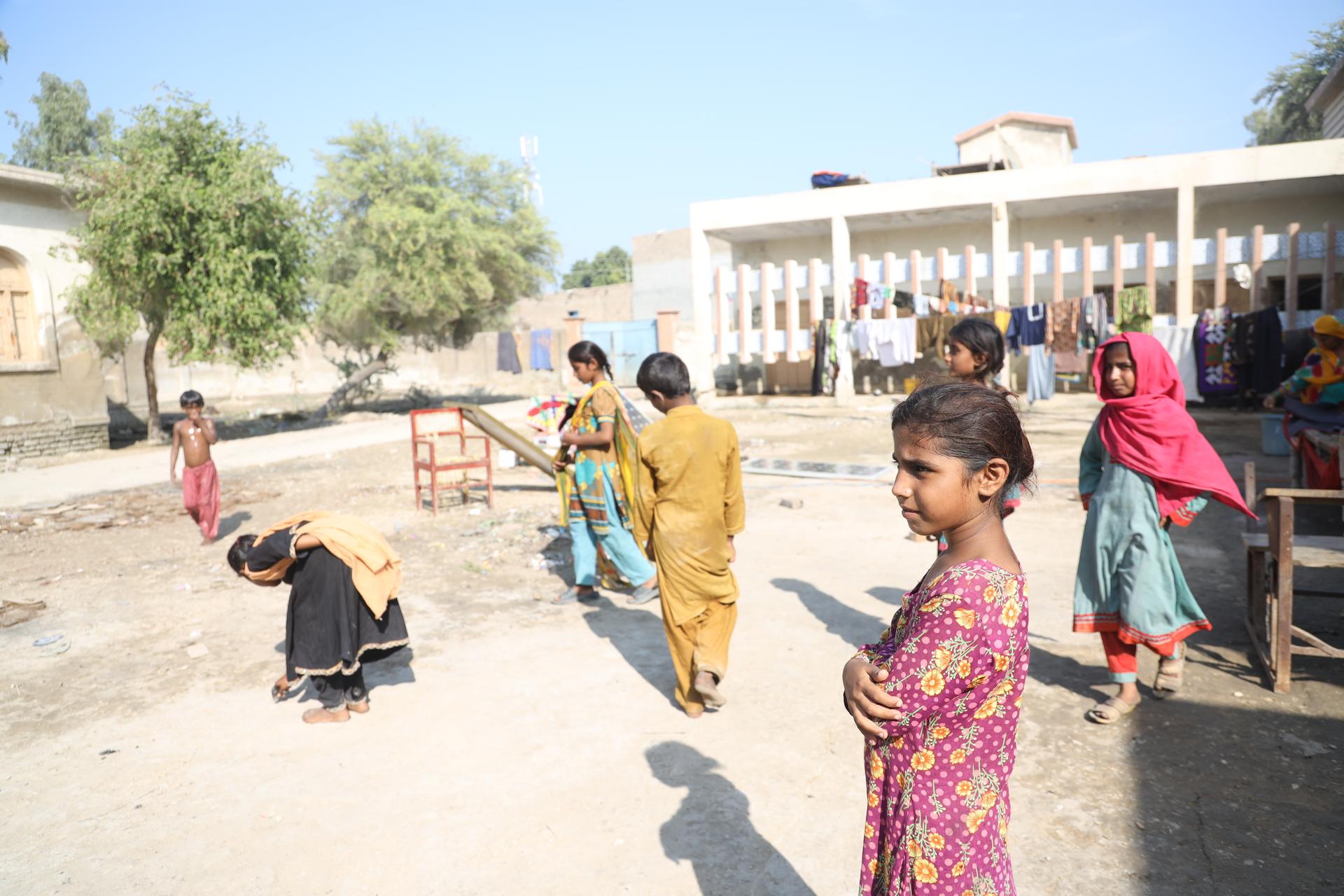
“The children are not healthy here,” she said. “But what can we do? We’re helpless until we return home.”
Her 5-year-old son has a persistent cough. He and his 3-year-old sister have malaria, with fevers that broke after more than a week.
“We dream that our kids will get educated and become doctors. But how are they going to do that if they can’t go to school?”
“We dream that our kids will get educated and become doctors,” Mallah said with a smile. “But how are they going to do that if they can’t go to school?”
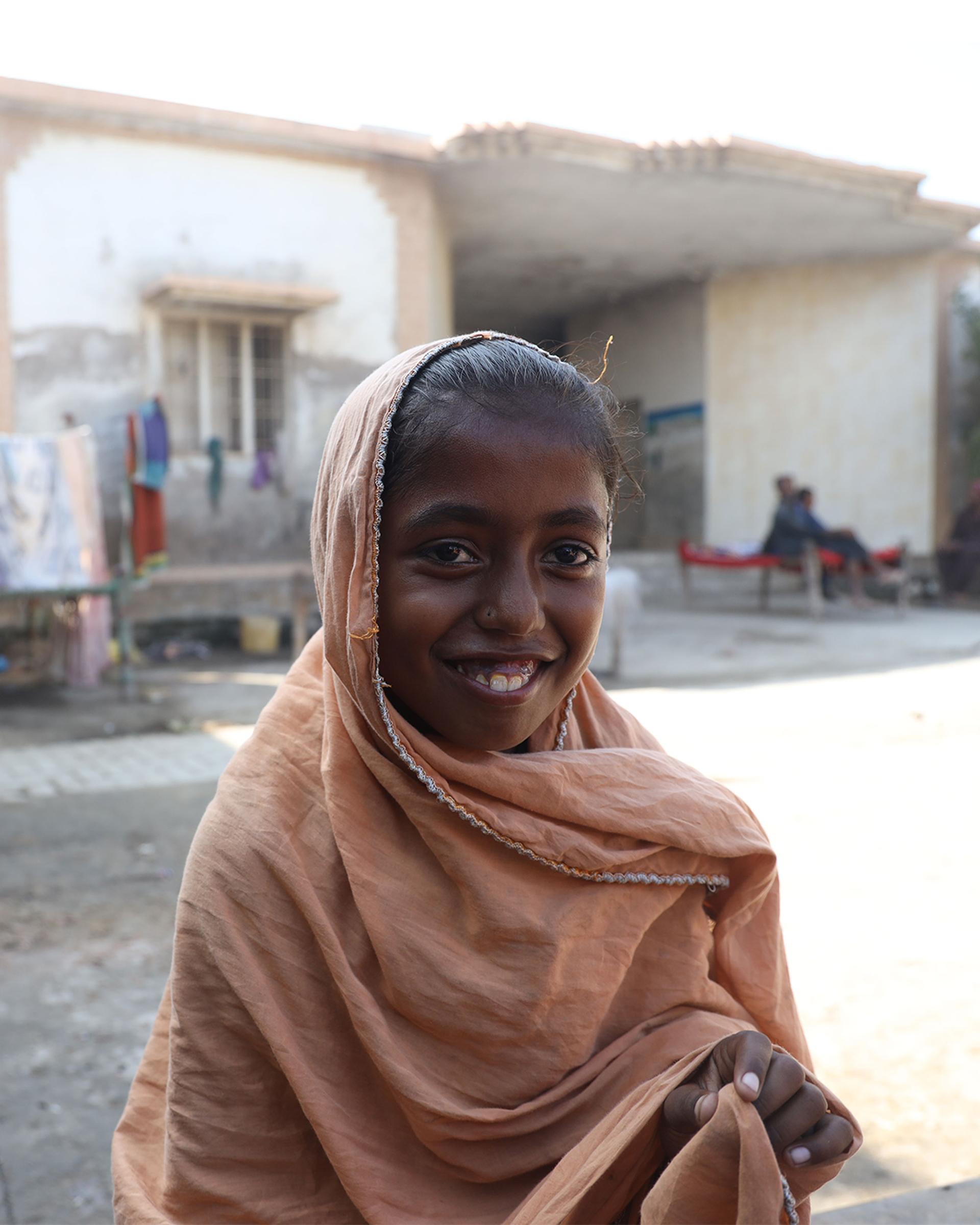
Ghani’s niece, 12-year-old Fatima Mallah, now sleeps in a classroom a few doors down from where she used to be in second grade. She likes playing with her cousins there, including gleeful games of tag in the school’s courtyard, but she misses school.
“She cries and says, ‘bring back my books,’ but we can’t, because we don’t have money,” said her mother, Shaahzadi Mallah, sitting on a traditional wood and woven rope bed in the courtyard. “We can’t even eat three meals, how can we buy books?”
The family is down to two meals a day. The cow whose milk they used to sell is tied up in the school’s courtyard, under a line of drying laundry. The cow’s grazing land is flooded, so she’s not producing enough milk for the family to sell.
Most of the places where Abdul Ghani used to work as a mason are flooded, too. He recently bought nets to start fishing the floodwaters.
Farmers are perhaps even worse off, as flooding ruined their rice crop for the year and, in many places, will prevent them from sowing wheat this month.
In affected areas, pumps powered by tractor engines are working to “de-water” towns, which often means moving water to agriculture fields or other less populated areas.
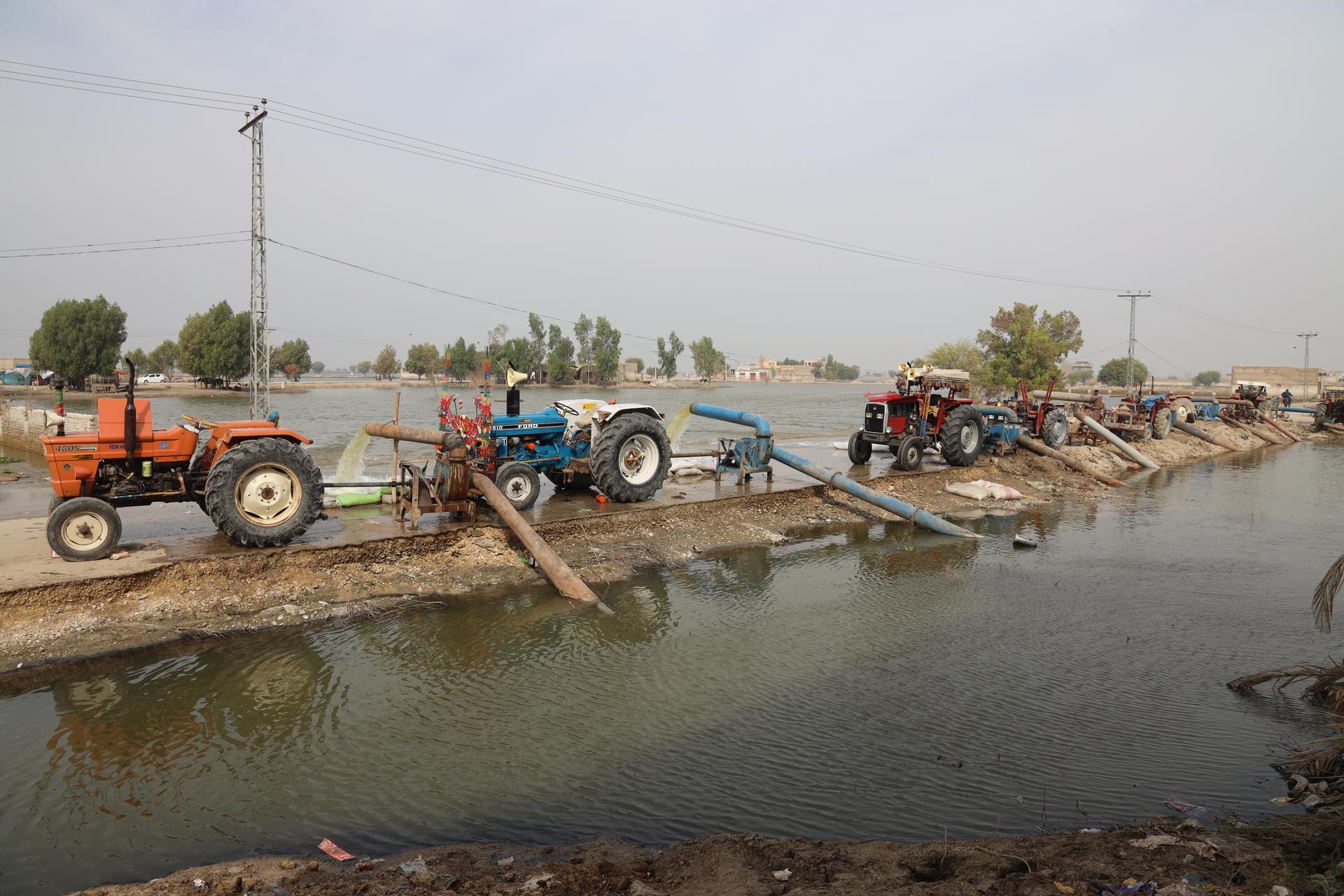
Government and military officials are going door-to-door conducting damage assessments. Sindh’s information minister Sharjeel Inam Memon said only when that’s complete will money be distributed to help people rebuild.
“Once the assessment figures come, then the rehabilitation work will start,” Memon said.
Related: Loss and damage: Who is responsible when climate change harms the world’s poorest countries?
